In Praise of the Tiny Truck.
Don’t plan your city to fit your vehicles. Plan for vehicles that fit your city.
This week The Economist published a story about how some American farmers are choosing to import small—indeed, teeny tiny—trucks from Japan, rather than pay up to $80,000 for a pick-up from Ford or GM.
“They’re amazingly useful,” one farmer, who’d purchased a 1997 Honda Acty, was quoted as saying. At less than five-feet wide, it could easily fit into his barn, something he couldn’t say for super-sized American pick-ups. Even with the $2,000 import fee, the tiny truck ended up being “dirt cheap.”
I was on a mixed farm in North Carolina around this time last year, and the farmer showed me around her extensive acreage on a a very basic, and very small, utility vehicle made by Kubota, a multinational farm equipment manufacturer established in Osaka in 1890. The open-cab workhorse seemed perfectly suited for all kinds of terrain, including muddy inclines, and easily carried heavy big bags of feed on its flatbed (and even the carcass of an Ossabaw hog that had died the night before).
On my trips to Asia and Europe, I sometimes drive my travel companions to distraction, because I’m always stopping to take photos of offbeat vehicles, like this tiny bus I spotted on Rome’s Via del Corso. It’s perfectly suited to wending its way through the narrow streets of the Centro Storico. I’ve ridden similar buses in the hill towns of Spain.
Japan, home of all that is kawaii (cuuuuuute!) is probably the world’s hot spot for teeny-tiny service vehicles. (This post by Dan Hill is a great introduction to Tokyo’s small-vehicle culture.) The streets are full of pint-sized garbage trucks, delivery vehicles, even fire trucks.
This got me thinking about the service vehicles I see in cities in Canada and the United States, and how disproportionately large they are, and the impact that this has on what our cities look like. In fact, in some cities, the size of intersections in new developments is determined by the turning radius of fire trucks.
“In Miami,” notes Jeff Speck in his book Walkable City, “people wonder why intersections in residential neighborhoods are often so fat….the answer is that the firefighters’ union once struck a deal that no truck would ever be sent out with fewer than four firemen on it.” The only truck that fit the bill was the hook-and-ladder. “For many years, one-story residential neighborhoods had to be designed around the lumbering turning radius of a truck built for tall-building fires.”
Fire trucks don’t have to be anywhere near that big, though. Washington DC and Boulder Colorado are testing out electric-diesel hybrid fire trucks with tight turning radii:
In my Montreal neighborhood, the trucks that deliver beer, milk, and other goods to small grocery stores tend to be huge. So are the school buses, even though many of them run consistently about one-third full. (The justification for the latter is safety: the bigger the buses are, the reasoning goes, the less chance kids will get hurt in a crash. But this is a sector that hasn’t changed in decades, much like the design of those yellow diesel buses; it’s definitely time to rethink the way we get our kids to school.) European cities have experimented with better ways to get goods to retailers, including setting up distribution warehouses where trucks from out-of-town manufacturers can deposit their loads, with electric cargobikes ensuring the “last-mile” delivery to local retailers.
On social media, people have sent me lots of examples of cities that are trying to right-size vehicles to their streets and neighborhoods, like this from Sydney, Australia:
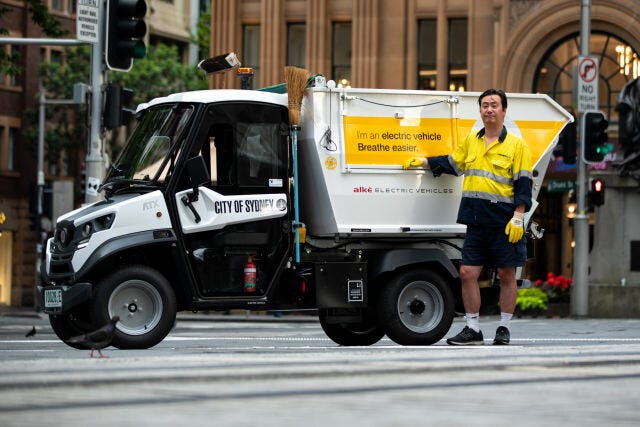
There is a world of great ideas out there. Cities are the places that should be leading the charge to decarbonize. Yet, almost everywhere I travel in North America, the status quo on city streets is outsized, and even supersized, service vehicles. How can we encourage change? Japan has solved the problem by taxing vehicles by weight and engine displacement. This makes a lot of sense, as heavier vehicles inflict costly damage on public roads; making them more expensive to own and operate encourages manufacturers to make smaller, lighter vehicles that make cities safer.
The objection raised in North America is that electric vehicles, because of their batteries, are extremely heavy—and don’t we want to encourage the uptake of electric? The obvious answer would be to exclude EVs from such taxation. But maybe we should think twice before doing that. GM just announced it’s killing the Bolt, its cheap (under $20,000) electric car, and retooling its factories to produce big-ass, and very heavy, electric trucks. As David Zipper at the Harvard Kennedy has pointed out in this Atlantic article, and reiterated on social media, “Big SUVs and trucks require huge batteries, which guzzle electrons. Producing that electricity can generate a lot of emissions – even more than gas-powered sedans…[so big electric trucks] can actually worsen climate change because they consume scarce battery minerals that could otherwise electrify more efficient vehicles (i.e. smaller ones like the Bolt).” And because they are so heavy, they are deadly to anybody outside of them—pedestrians, kids on bicycles—when they do crash. His answer? Go full Japanese, tax by weight, and don’t exclude electric vehicles. I agree: why should we be encouraging people to buy electric Hummers, or, God help us, Cybertrucks?
Until we attain Japanese levels of enlightenment, though, it seems like some farmers are taking things into their own hands, and coming to the realization that, when it comes to a truly useful vehicle, small can indeed be beautiful.
_____
I hope you’ll consider becoming a paid subscriber to my Straphanger Substack. Almost everybody who’s signed up so far is a “free rider.” There’s no shame in that. But to keep the faith, and to keep up the writing, I’m going to need at least a few people who are willing to help out by chipping in, even with a low-priced monthly subscription.


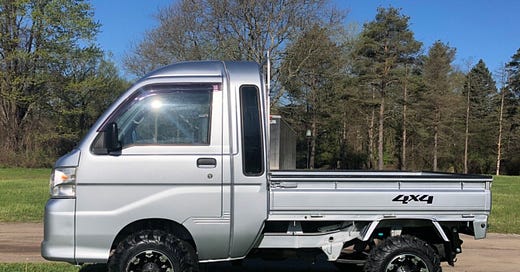



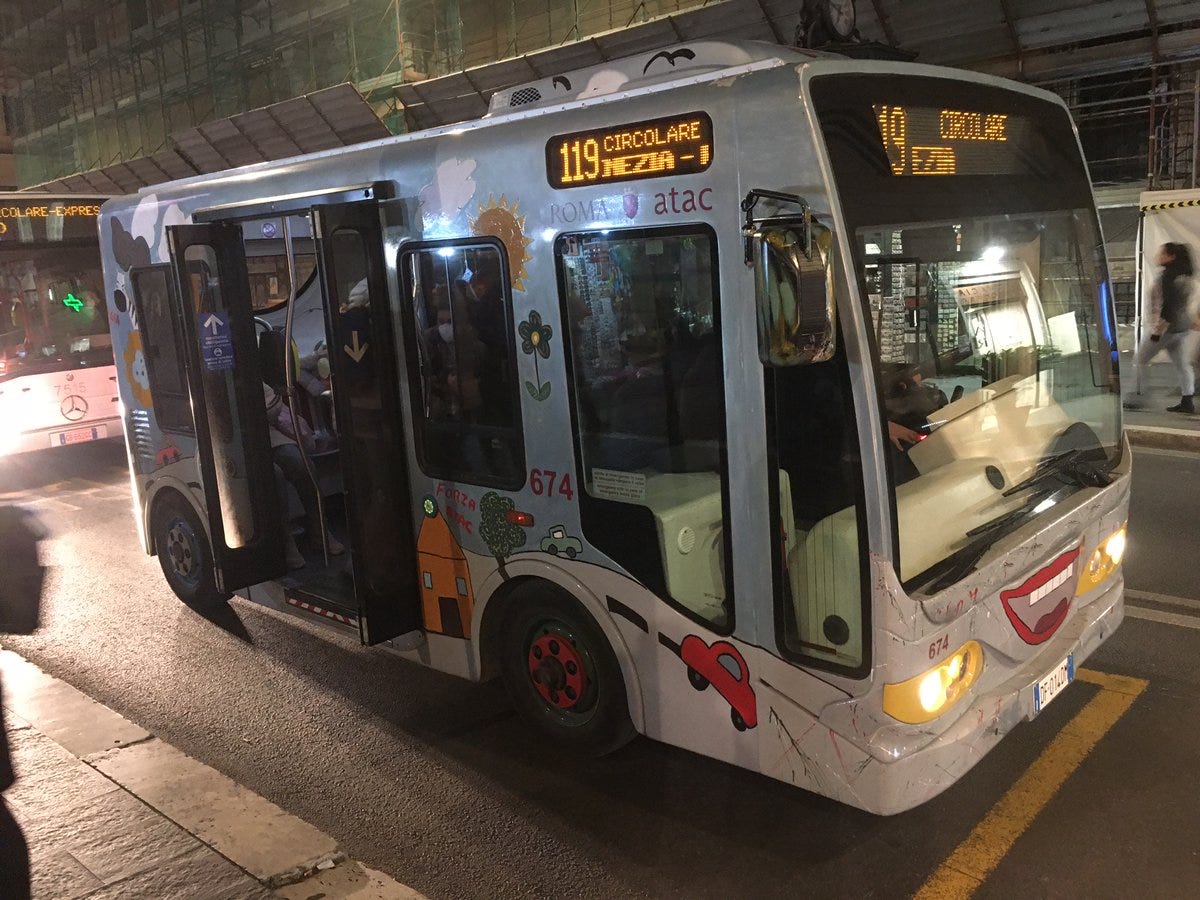
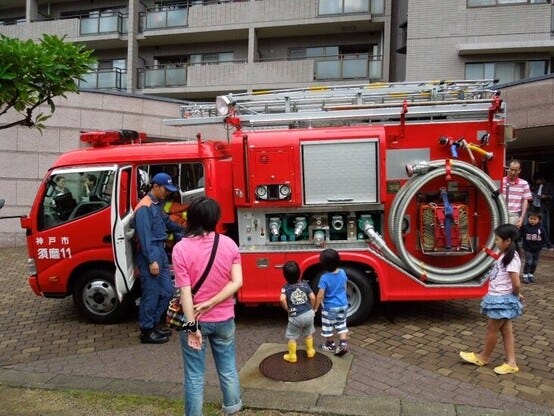
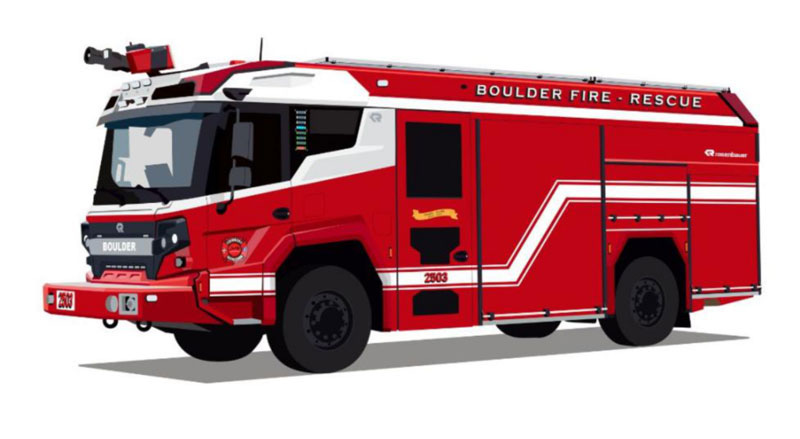
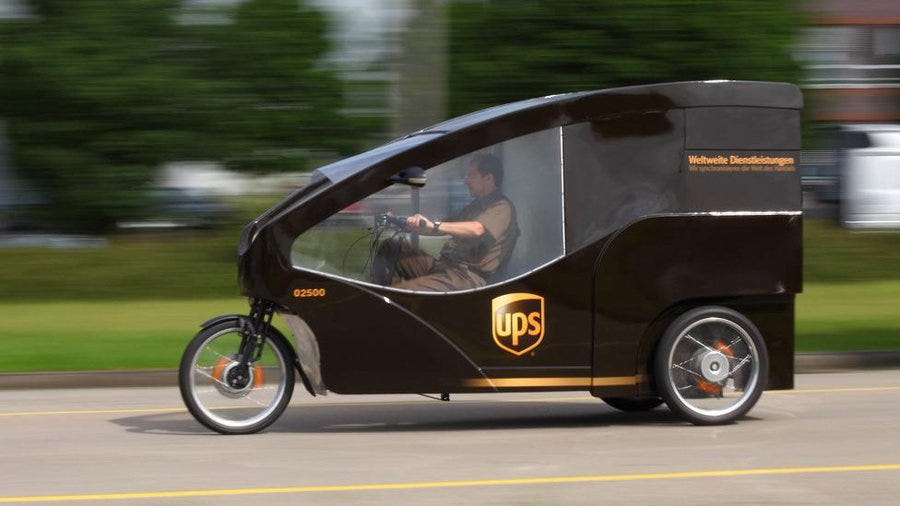
Bit of a quibble with your source, it’s standard for many fire departments in North America to have a crew of four on all of their trucks. You don’t need to have a full size hook & ladder (aerial) truck for that.